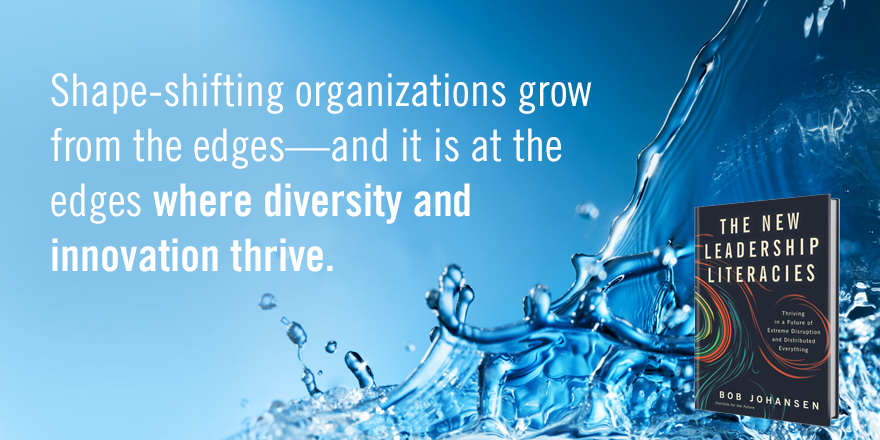Future Now
The IFTF Blog
Leaders: Do you know how to lead Shape-Shifting Organizations?
 When I first came to Institute for the Future, I got introduced to Paul Baran, one of several people who is credited with inventing packet switching, the core technology of the internet. As Paul Baran described it to me, he was asked when he was at RAND to help create a telecommunications network that would resist nuclear attack. This was in the midst of the Cold War. At that time, networks were centralized, so if an enemy attacked any portion of it, the entire network could become vulnerable. In the new architecture, instead of centralized switching, packets were separated as they were sent and then put back together again when they were delivered. Paul Baran first described this as “hot-potato routing” but it came to be called packet switching, which made it possible for the network to continue working even if a portion of it was destroyed.
When I first came to Institute for the Future, I got introduced to Paul Baran, one of several people who is credited with inventing packet switching, the core technology of the internet. As Paul Baran described it to me, he was asked when he was at RAND to help create a telecommunications network that would resist nuclear attack. This was in the midst of the Cold War. At that time, networks were centralized, so if an enemy attacked any portion of it, the entire network could become vulnerable. In the new architecture, instead of centralized switching, packets were separated as they were sent and then put back together again when they were delivered. Paul Baran first described this as “hot-potato routing” but it came to be called packet switching, which made it possible for the network to continue working even if a portion of it was destroyed.
Decentralized Networks
The disruptive improvement to packet switching created a new kind of network that didn’t require centralized management. Packet-switched networks have no center. They grow from the edges, and they cannot be controlled. Packet switching and other forms of distributed computing are now ready to scale, which allows for the creation of more robust networks, but it also introduces new dilemmas of leadership. How do you lead in organizations that have no center, grow from the edges, and cannot be controlled?
Distributed Everything
Paul Baran and packet switching, in a real sense, got things started down a path toward distributed everything. Now, more than fifty years after packet switching was invented, distributed organizations will become globally scalable. Looking to the future, I now believe that everything that can be distributed will be distributed.
The shift from centralized to decentralized to distributed is still underway, in a very different context with much more advanced technology. The big challenge with these shape-shifting organizations is that leadership will look really different. Leading shape-shifting organizations will amplify the need for constructive depolarization: The ability to calm tense situations where differences dominate and communication has broken down, and to bring people from divergent cultures toward constructive engagement. It will also require commons creating, which allows assets to be shared and provides mutual-benefit partnering models for innovation.
THOSE WHO ARE FLUENT IN THE NEW LITERACY OF shape-shifting organizations will say:
- I am very good at leading through entangled networks that have no center, grow from the edges, cannot be controlled - and where hierarchies come and go.
- I always look for ways to create mutual-benefit partnering models for engagement.
- I seek out diverse potential partners who can help me do what I cannot do alone.
 This post is an excerpt from Bob Johansen's new book The New Leadership Literacies: Thriving in a Future of Extreme Disruption and Distributed Everything.
This post is an excerpt from Bob Johansen's new book The New Leadership Literacies: Thriving in a Future of Extreme Disruption and Distributed Everything.
Learn more about the book here or purchase your copy on Amazon.



